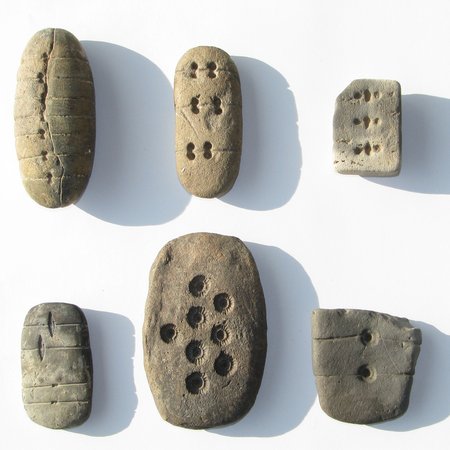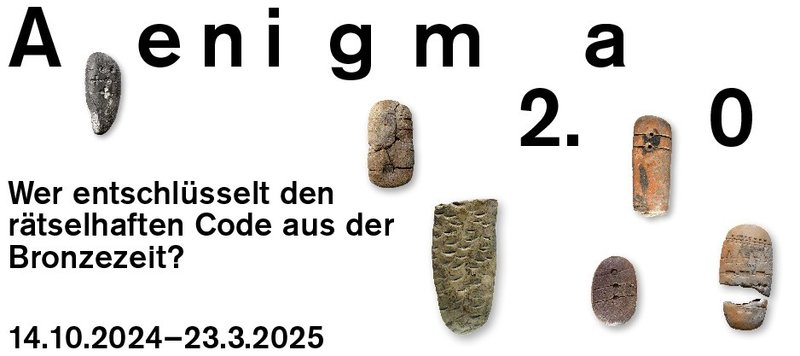

Exhibition at the Frankfurt Archaeological Museum
14 October 2024 to 23 March 2025
For around 150 years, archaeological research has been puzzling over the function of small loaf-shaped or tablet-like objects. They are made of fired clay or stone and were discovered in settlements mainly from around 1750 to 1550 B.C. The artefacts bear groups of lines and impressions of different shapes on their surface. The apparently by no means random arrangement of these marks on the surface suggests a system of signs, possibly to represent numbers or other information. Do some of these objects even bear a pre-form of writing? - Knowledge of this has been lost.
Their widespread distribution between the Middle Rhine region and north-west Bulgaria as well as between Kujawy in Poland and the island of Corsica indicates that the "bread loaf idols" are evidence of an early European communication network in which the Rhine-Main region was at least marginally integrated. Bronze Age finds from ten European countries shed light on a previously unanswered question of international archaeological research and provide an insight into a phenomenon of early European contact around 3500 years ago that has received little attention in this country to date.

